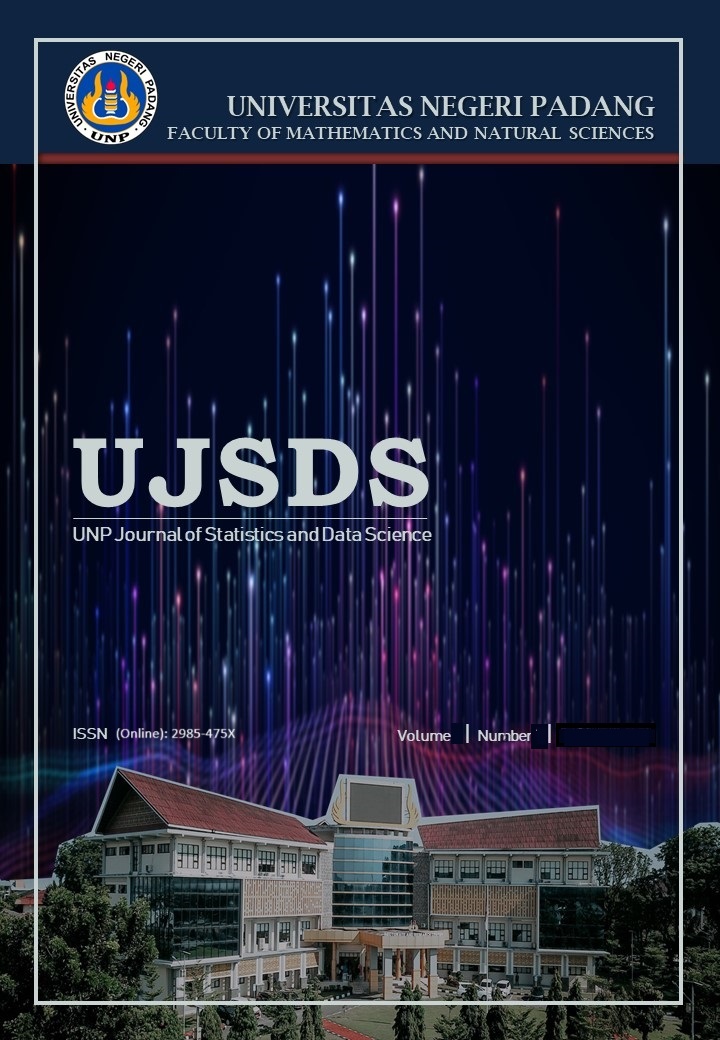Comparison of Cox Proportional Hazard Models with Interaction and Without Interaction in Heart Failure Patients
DOI:
https://doi.org/10.24036/ujsds/vol3-iss2/342Kata Kunci:
survival analysis, Cox Proportional Hazard, heart failure, variable interaction, survival timeAbstrak
One of the leading causes of morbidity and mortality worldwide is heart failure. The prevalence of heart failure
in Indonesia reached 5% in 2020. One survival analysis method to identify factors affecting survival time is the Cox
Proportional Hazard model. In this study, models with and without variable interactions were compared to model the
survival time of heart failure patients using the Cox Proportional Hazard method. The research data consisted of 299
heart failure patients, including variables of high blood pressure, anemia, and age. The analysis results showed that
the variables of high blood pressure and age significantly affected the survival time of patients, while anemia status
and interactions between independent variables were not significant. The model without interaction had a lower AIC
value than the model with interaction, making it the best model. Based on the best model, patients with high blood
pressure were 1.52 times more likely to die than patients without high blood pressure. Additionally, the probability of
death increased by 4.33% for every one-year increase in age. This study concludes that the model without interaction
is more suitable for describing the relationship between independent variables and survival time in heart failure
patients.
Unduhan
Diterbitkan
Cara Mengutip
Terbitan
Bagian
Lisensi
Hak Cipta (c) 2025 Bunga Nafandra, Tessy Octavia Mukhti, Yoli Marda Novi, Nurul Mulya Syahwa, Olga Afrilly Putri

Artikel ini berlisensi Creative Commons Attribution 4.0 International License.










